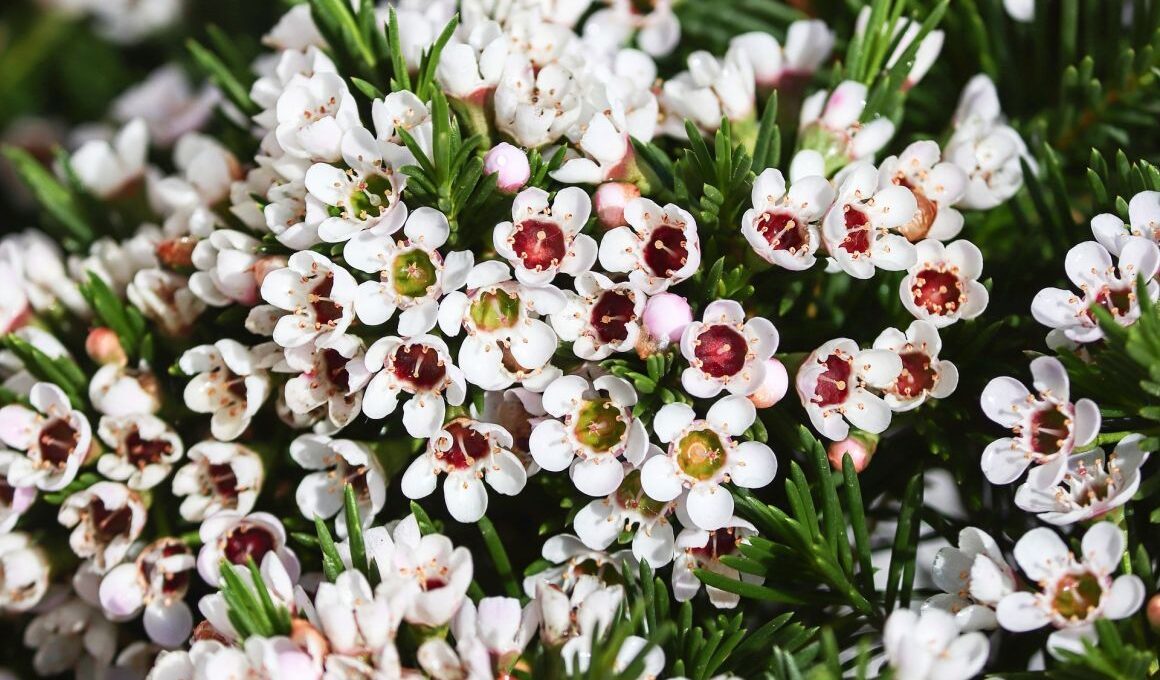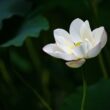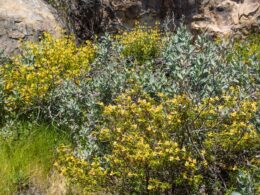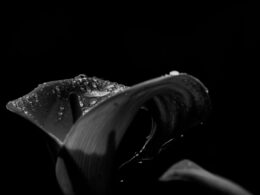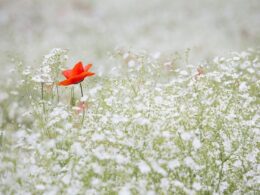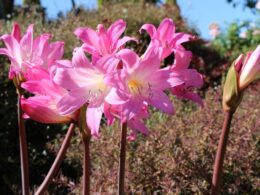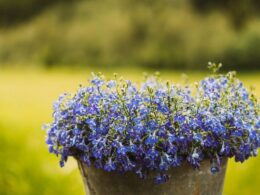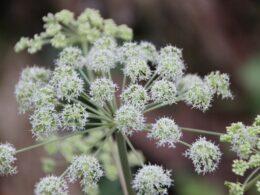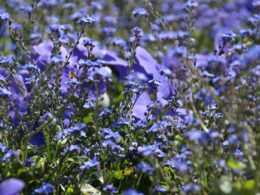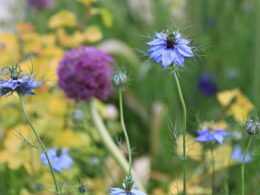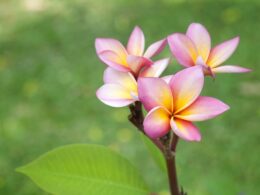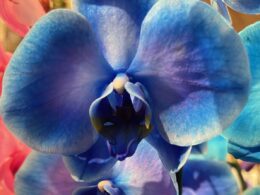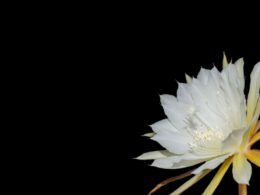What Is a Geraldton Wax Flower? Names and Characteristics
The Geraldton wax flower (Chamelaucium uncinatum) is a beautiful Western Australian shrub that is enjoyed by gardeners and floral enthusiasts alike. It grows up to 13 feet tall. Its Latin name refers to the hooked tips of its leaves, as uncinatum means ‘hooked.’ The common name can also be spelled ‘Geraldton waxflower’ and refers to the waxy feel of the blooms.
Waxflowers have long stems with lance-shaped leaves. Their flowers are similar to those of tea trees, and they range in color from white to pink. They first appear in June and last through November.
The blooms are pleasantly scented, making them a favorite among pollinators like bees and butterflies. Geraldton wax flowers are relatively easy to care for, and they make an excellent addition to any garden.
How to Grow and Care for Geraldton Wax Flowers?
Geraldton wax flowers are relatively easy to grow, making them a popular choice for gardeners of all levels of experience. The first step is to choose a sunny spot in the garden with well-drained soil. Then, the seeds should be sown thinly and covered with a light layer of soil. Once the seedlings have emerged, they should be thinned out so that only the strongest plants remain.
Geraldton wax flowers prefer to be on the drier side, so they should be watered sparingly. When the flowers begin to bloom, they will need to be deadheaded regularly to encourage more blooms. With a little care and attention, these flowers will brighten up any garden.
Where Do Geraldton Waxflowers Thrive?
Geraldton wax flowers are native to Australia and thrive in Mediterranean climates. They prefer warm, dry weather and full sun, but partial shade will also work. In the U.S., this plant is only hardy to USDA hardiness zone 9a.
These flowers are tolerant of poor soil and can even grow in sand. They’re not too fussy about temperatures, and can tolerate light frosts (down to 28 degrees Fahrenheit). However, they’ll quickly die in a humid environment.
Culinary Uses of Geraldton Waxflowers
What’s interesting about Geraldton waxflowers is that their leaves smell like citrus. Their aroma is often compared to lemon myrtle or Kaffir lime, and they can be used in cooking similarly to rosemary. You could infuse them in oil, or add them to a stock or sauce. They also work great if you want to add citrus notes to a distilled spirit.
The flowers of certain cultivars can also be used in culinary dishes. For example, ‘Jambinu Zest’ has edible flowers with the same citrus-like aroma as the leaves. They can be crystallized and used as a decoration on cakes and desserts. You could also add them to salads or use them as a garnish.
Decorative Uses of Geraldton Wax Flowers
In addition to being used as filler flowers in bouquets and floral arrangements, Geraldton wax flowers can also be used for other decorative purposes. For instance, the flowers can be dried and included in potpourri or as a decoration on wreaths. Some of the most beautiful varieties of waxflowers are:
- ‘Matilda,’ with deep red buds and white petals;
- ‘Bridal Pearl,’ which ages from pure white to light pink;
- ‘Trifeta,’ which changes from white to pink and purple;
- ‘Crystal Pearl,’ with pure white flowers that remain white;
- ‘Purple Pride,’ with deep lavender petals that age to deep purple;
- ‘Dancing Queen,’ with double petals that age from light pink to deep lavender;
- ‘Sweet 16,’ which turns into a deep red color with age.
In a garden, these flowers can be used as groundcover, in rock gardens, or as a border plant. Some gardeners swear by them when it comes to wind protection. They also make excellent cut flowers – they’re very hardy and last long after cutting.
If you’re looking for a beautiful and versatile plant, the Geraldton wax flower is a great choice. With its stunning blooms and citrus-scented leaves, it will add interest to any garden.
Is Your Garden Missing Geraldton Wax Flowers?
Geraldton wax flowers are beautiful, versatile plants that can be used in a variety of ways. Whether you want to add them to your garden or use them for culinary or decorative purposes, these flowers are sure to brighten up your day.
So, if you live in Australia or USDA hardiness zone 9a and feel that your garden is a bit empty, why not consider adding some wax flowers? And if your climate is too cold or humid for wax flowers, you can still enjoy them indoors!





